Bulgaria’s second largest city, Plovdiv, is a historic city that has been settled for more than 6,000 years.
On the day we crossed the border into Bulgaria overland from Turkey, we were lucky enough to travel all the way to Plovdiv.
Here are some of the tourist attractions we found on our walk around Plovdiv, a city that is picturesque wherever you turn.
- About Plovdiv
- Roman Forum of Philippopolis
- Ancient Stadium of Philipopolis
- Ancient Theatre of Philippopolis
- Djumaya Mosque
- Sveta Marina church
- Bishop’s Basilica of Philippopolis
- “Sveta Bogoroditsa” Church
- Lamartin House
- St. Constantine & Helena Church
- Regional Ethnographic Museum Plovdiv
- Georgiadi House
- Early Byzantine fortress walls with a circular tower
- Evangelical Cathedral Church
- Saint Nedelya Orthodox Church
- Clock Tower
- Singing Fountains
- Alyosha Monument
- Accommodation in Plovdiv
About Plovdiv
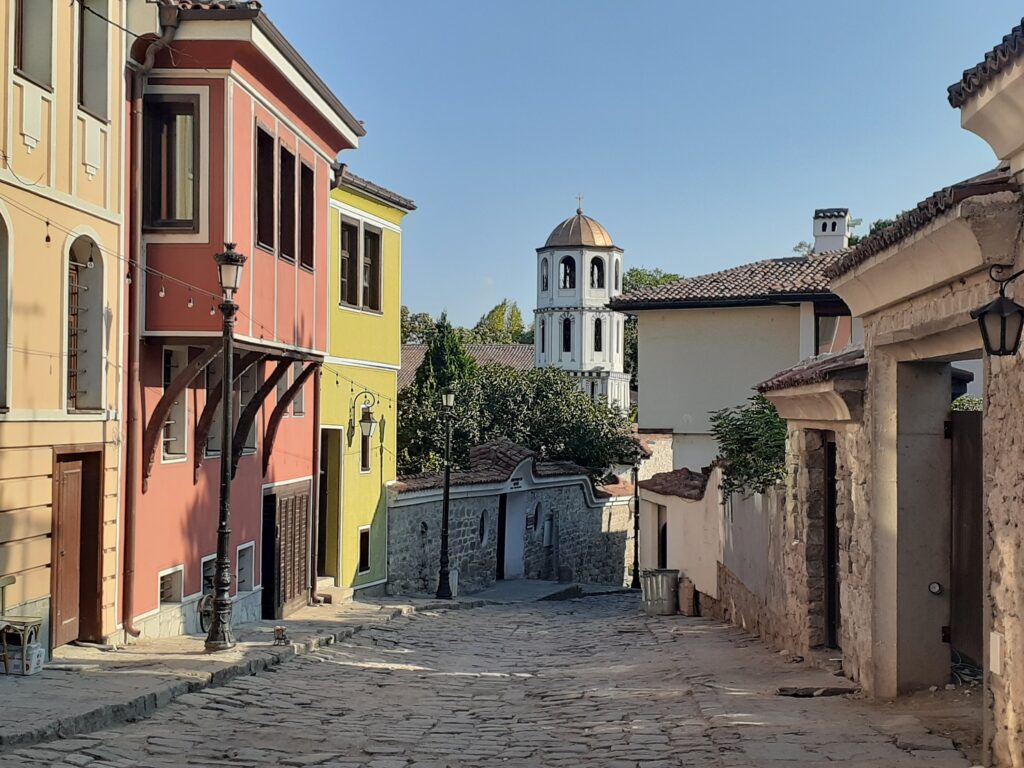
Plovdiv is the capital of Plovdiv Oblast, situated in the southern part of the Plovdiv Plain on both banks of the Maritsa River. It is the second largest city in Bulgaria after the capital Sofia, with a population of approximately 340,000 (2018).
Plovdiv has a long history, with evidence of Neolithic settlement around the 4th millennium BC. The city was once known as ‘Philippopolis’, and the ruins of a Roman amphitheatre, a theatre and an ancient forum are scattered throughout the city. You’ll see lots of ruins in this city. Local events are held at these ruins, and it is wonderful that the ‘old’ city is still being used today after thousands of years.
Roman Forum of Philippopolis
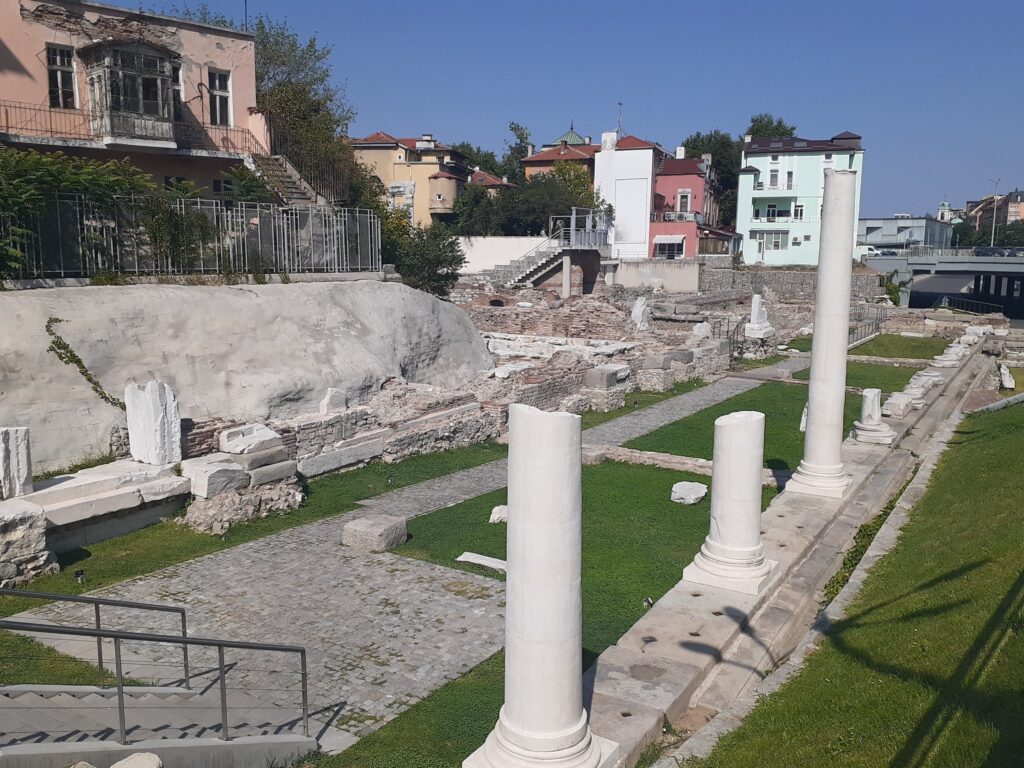
The Forum of Philippopolis (Agora) stretches along the main street of Plovdiv’s old town. The ruins of the ancient city of Philippopolis are displayed in several separate locations, but they blend into the cityscape of travellers and local passers-by, and the ancient city and the modern city seem to blend well together.
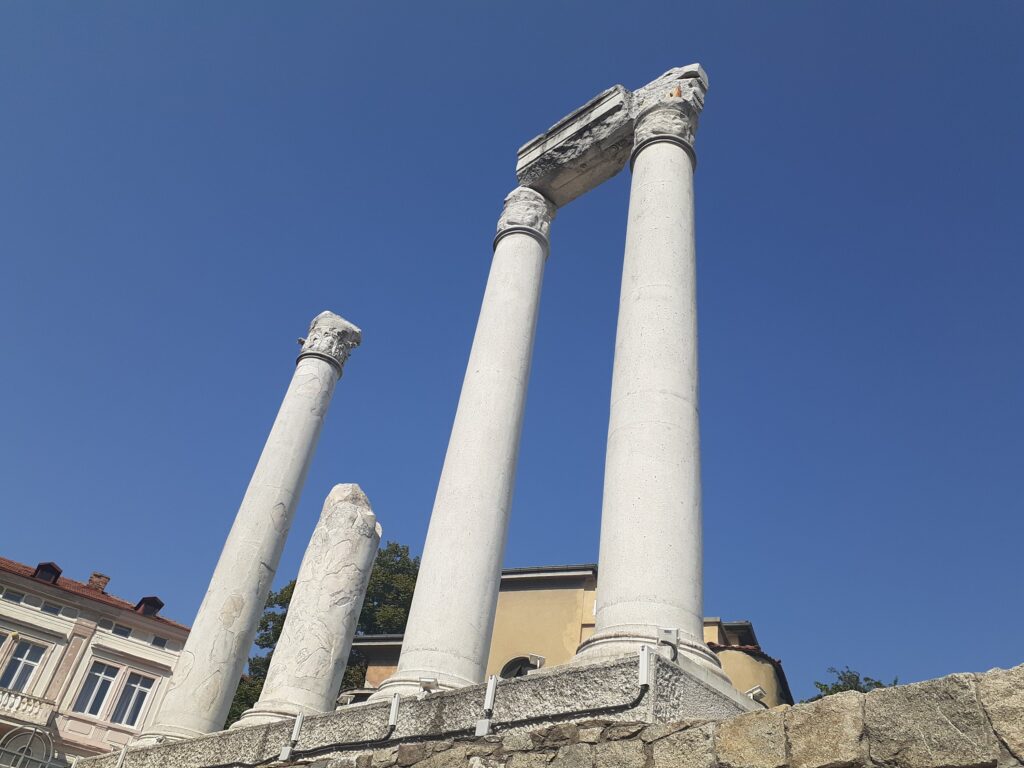
The most important city of the Roman province of Thrace, Philippopolis had its own commercial, administrative and religious centre, the Forum (Agora).
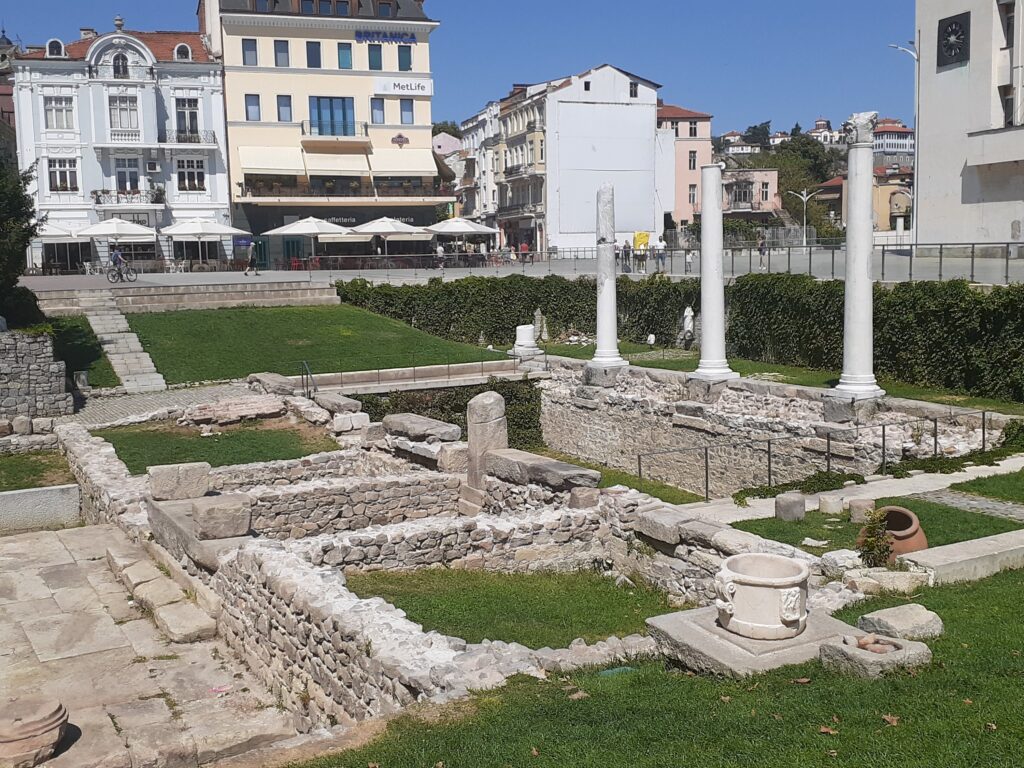
The ancient forum (agora), whose construction began in the early 1st century AD and lasted until the 5th century, was the largest and most important architectural complex in the ancient city. The Agora of Philippopolis includes the Entrance Colonnade, the shop Colonnade (Arcade), the Library, the Odeon, the Treasury and other buildings of unknown use.
Library
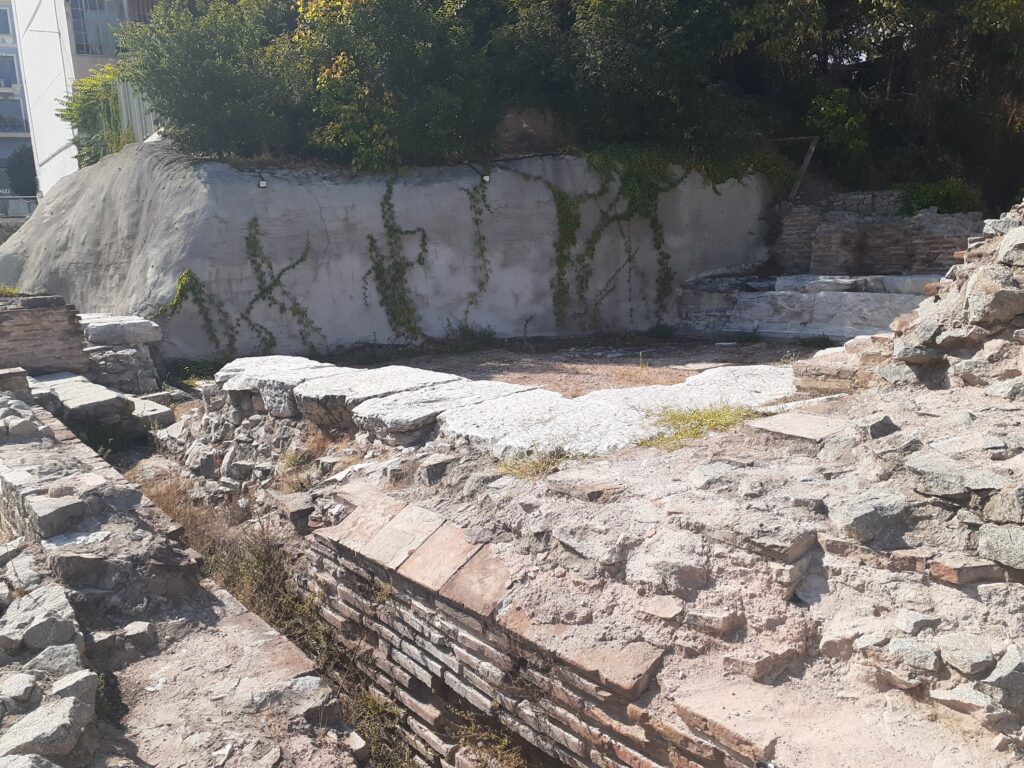
Located in the northern ancient forum, to the west of the Odeon. It is currently the only Roman library found in Bulgaria.
It has a rectangular hall with a marble-paved floor and a circular podium, with a niche formed in the wall for storing scrolls. The image of the ancient library was illustrated and easy to imagine.
City Council, later Concert Hall (Odeon)
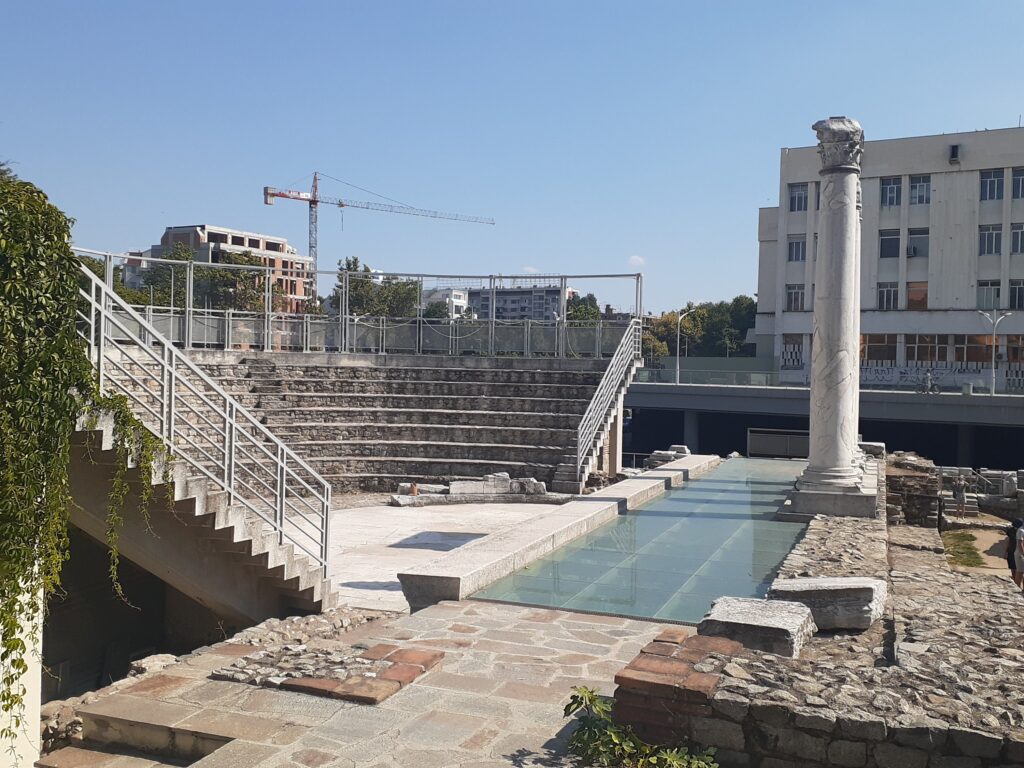
In the north-east corner of the Forum complex is the Odeon. It is easily recognised by its semi-circular theatre seating. In Roman times it functioned as the city’s council chamber. It has since been rebuilt and is also used as a theatre for concerts, performances and gatherings with a capacity of about 350 spectators. It is built in a typical Roman architectural style, similar to the theatre in Ephesus.
A number of ancient artefacts have been excavated in the area around the Odeon, including silver coins that were probably minted in Philippopolis.
Ancient Stadium of Philipopolis
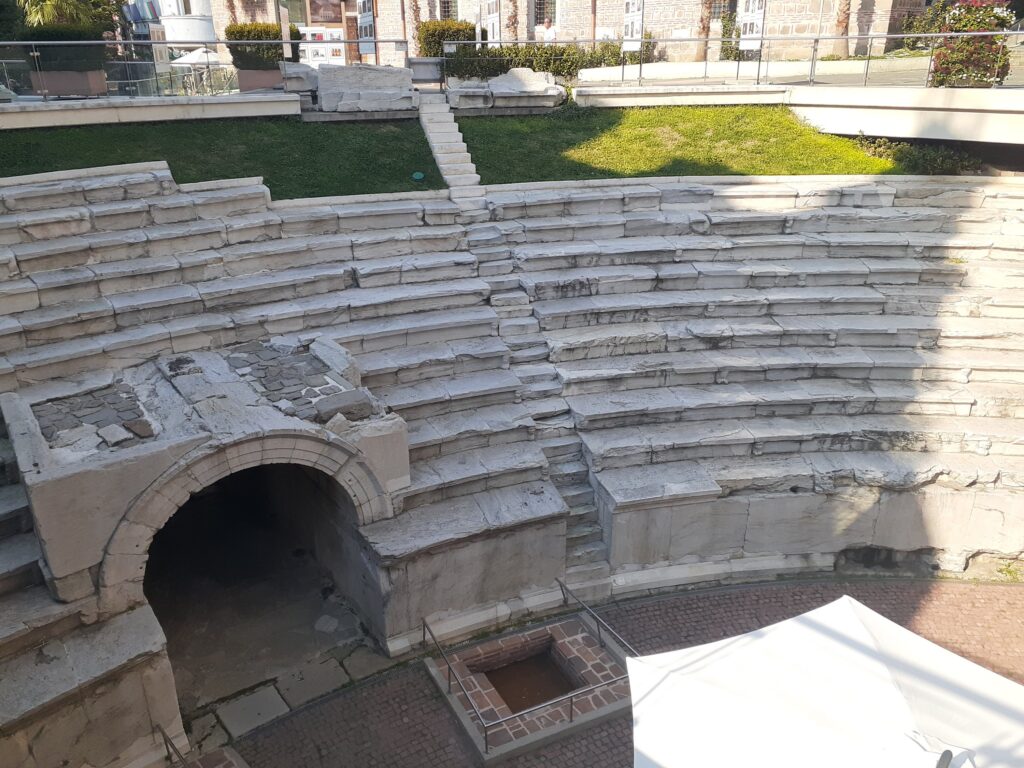
The Ancient Stadium of Philipopolis was built at the beginning of the 2nd century AD during the reign of Emperor Hadrian. It is one of the largest and best-preserved Roman buildings in the Balkans. It is approximately 240 m long and 50 m wide and was able to accommodate up to 30,000 spectators.
It is located at the bottom of the main street, near the Djumaya Mosque and Tourist Information. The 14 rows of seats, arranged like an amphitheatre, are made of monolithic blocks of marble.
An arched walkway was found under the rows of seats in the amphitheatre. The stadium is also known to have had an original drainage system.
Cafés and other facilities have been set up in the same space as the stadium, but nevertheless do not destroy the atmosphere of the ancient stadium. Various events are held in this square, and it’s s great that it is still the same place for people to gather as it was thousands of years ago.
Ancient Theatre of Philippopolis
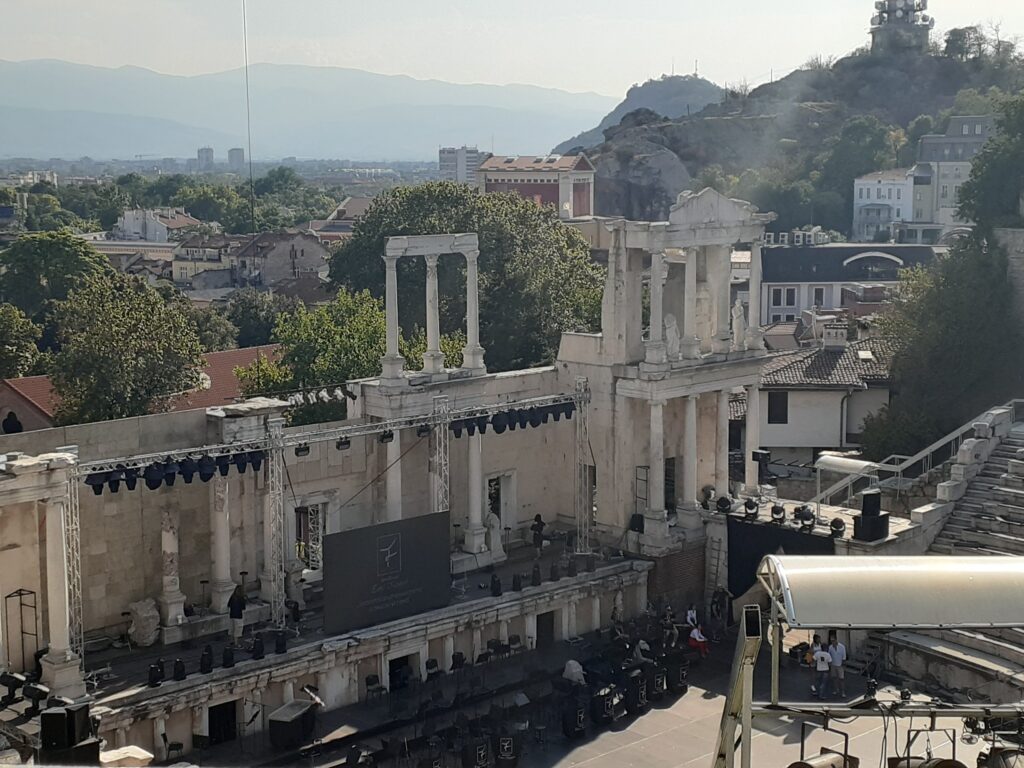
Built in the 1st century AD during the reign of Emperor Domitian, the Ancient Theatre can now be accessed from Old Town. The architectural design makes use of the natural topography between three hills and has something in common with Hellenistic theatre structures on the Aegean coast of Asia Minor.
The theatre is symmetrically developed around a main axis in the north-south direction, and the concentric circles of seats, separated by radial staircases from the open stage, are built of marble. The ancient theatre was in use until the 5th century, when it was destroyed by fire and earthquake.
Unfortunately, when we visited, local events were taking place and the theatre was not accessible. The image was taken from outside the gate, but gives an idea of its scale.
Djumaya Mosque
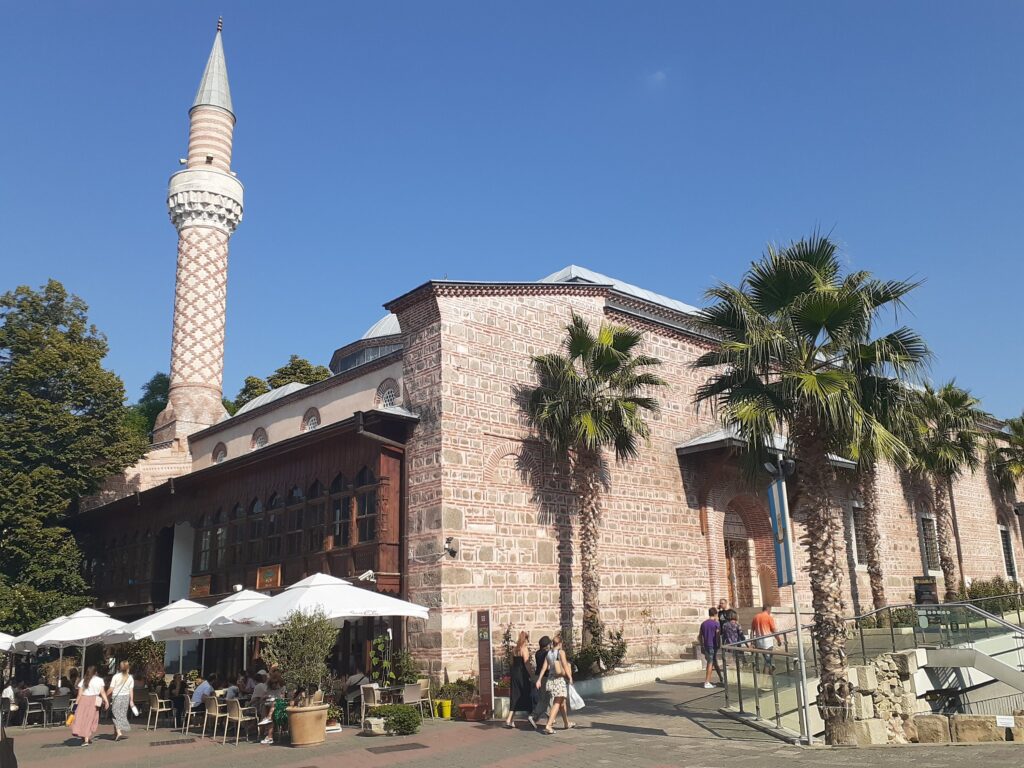
The Friday Mosque or Djumaya Mosque was built in 1364 on the site of the cathedral church after the conquest of Plovdiv by Ottoman troops. The mosque seen today was rebuilt in the 15th century.
The mosque is located in the centre of the city and has beautiful pink walls inside surrounded by green vegetation; it has nine domes and a chapel, with one minaret placed on the north-eastern corner of the main facade.
Sveta Marina church
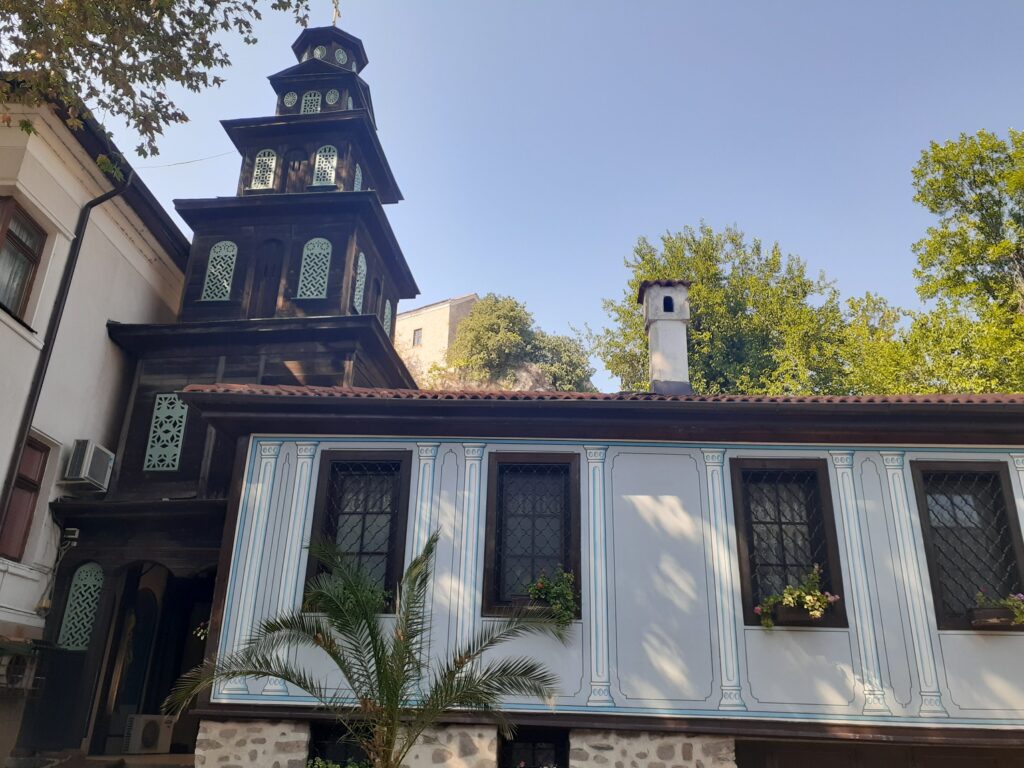
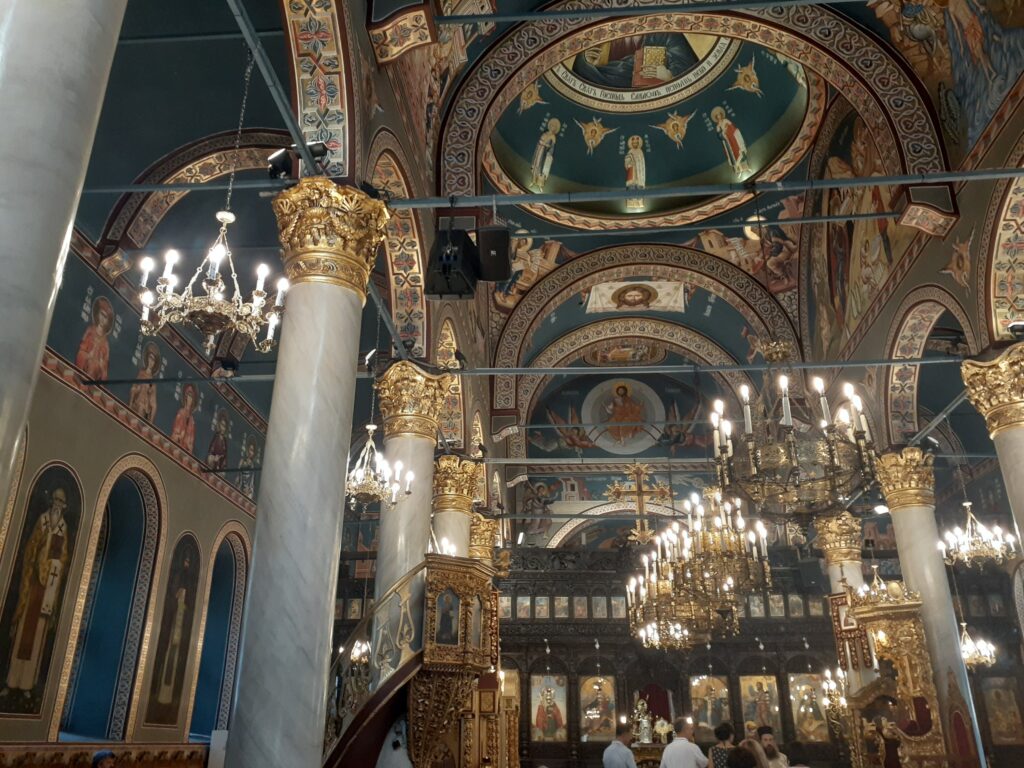
This is a quiet church with almost no tourists, although it is close to the Roman Theatre in distance. The wooden tower at the entrance was built in 1870 and gives the church its distinctive character.
Inside, the murals are beautifully lit by gorgeous chandeliers.
Bishop’s Basilica of Philippopolis
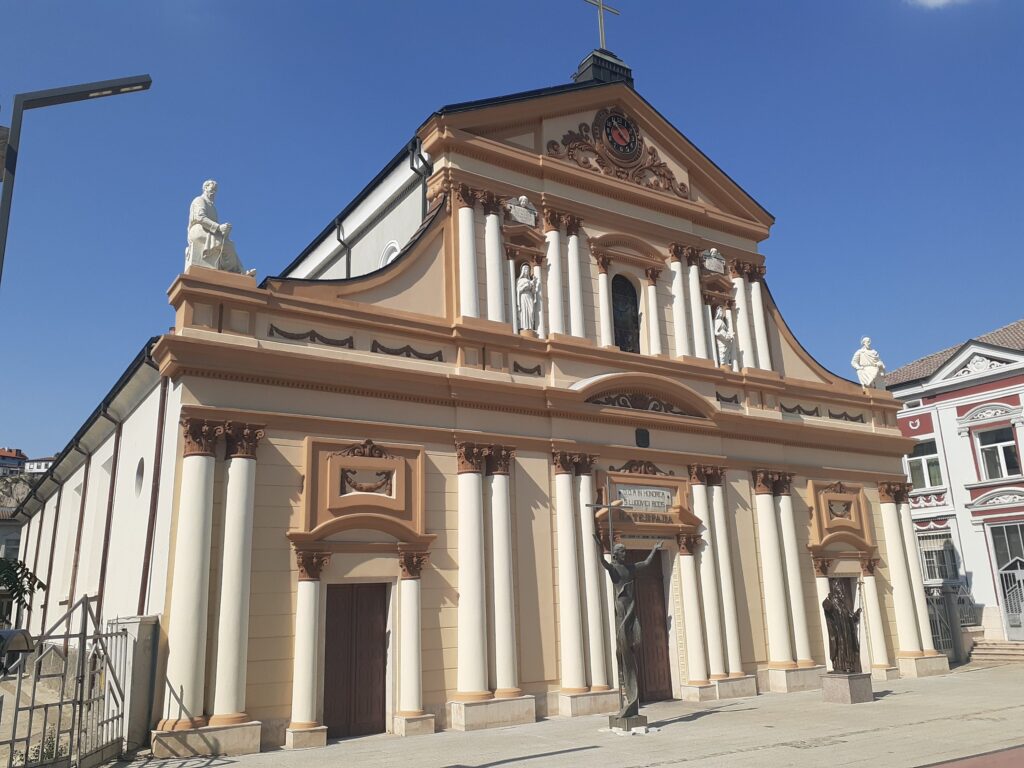
A ruined church in the ancient city of Philippopolis, built in the mid-4th century AD. It is one of the largest Christian churches of that period found in the Balkans.
“Sveta Bogoroditsa” Church
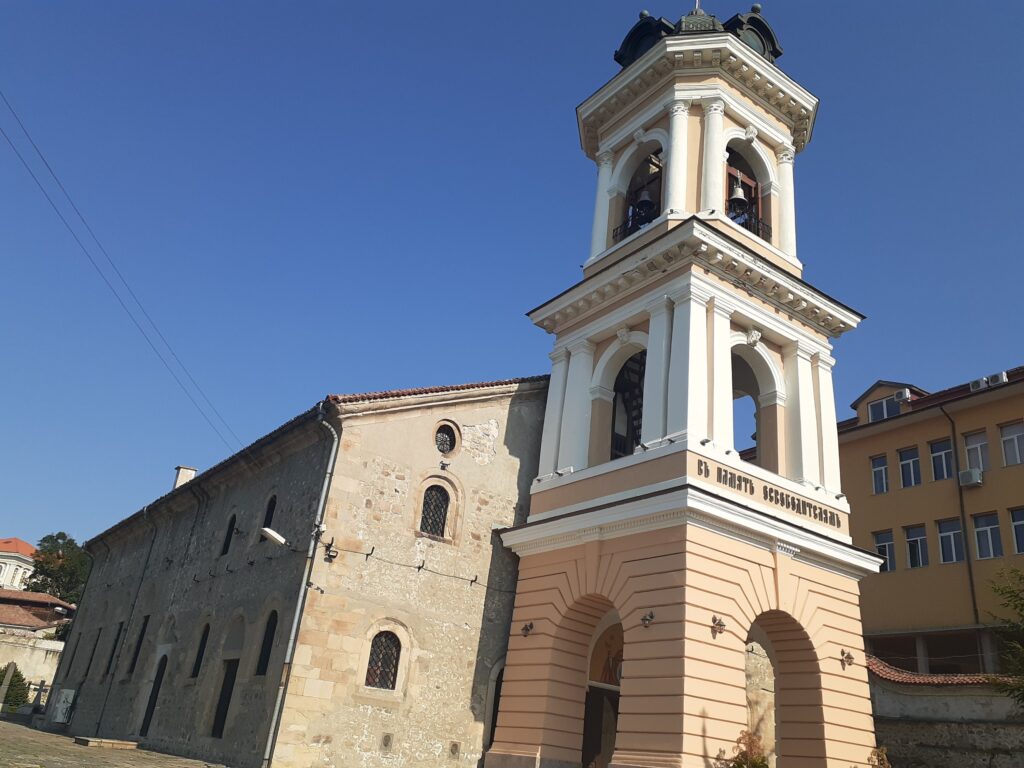
A small church originally existed on this site in the 9th century, but it was renovated in 1186 and turned into a monastery. The building seen today was built in 1844.
It is conspicuous because of its location at a main street junction. The pink and white bell tower is a landmark.
Lamartin House
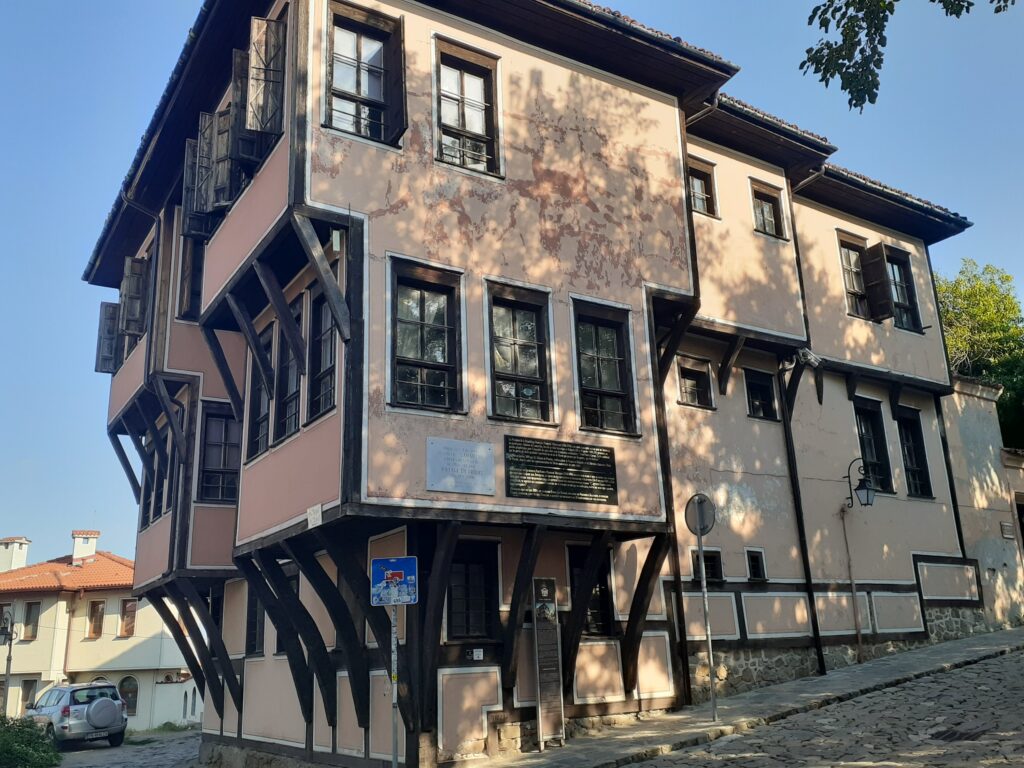
Built in 1830 and owned by the merchant Georgi Mavridi. It is one of the largest old houses in Old Plovdiv. The French poet Alphonse de Lamartine famously stayed here for three days.
St. Constantine & Helena Church
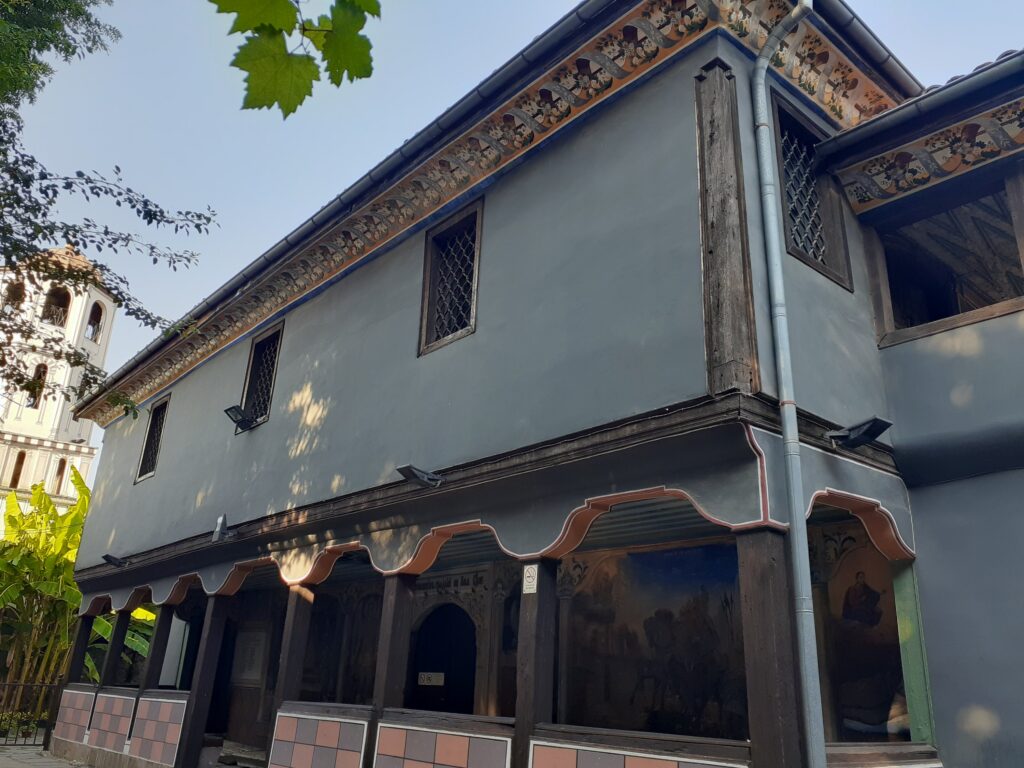
Considered one of the oldest churches in the city, named after Constantine the Great and his mother Elena. The current church building was rebuilt in 1832.
It has a chic blue-grey exterior, which is not often seen in other Plovdiv churches, and in the court yard there are benches decorated with plants that make you want to sit down and rest.
Regional Ethnographic Museum Plovdiv
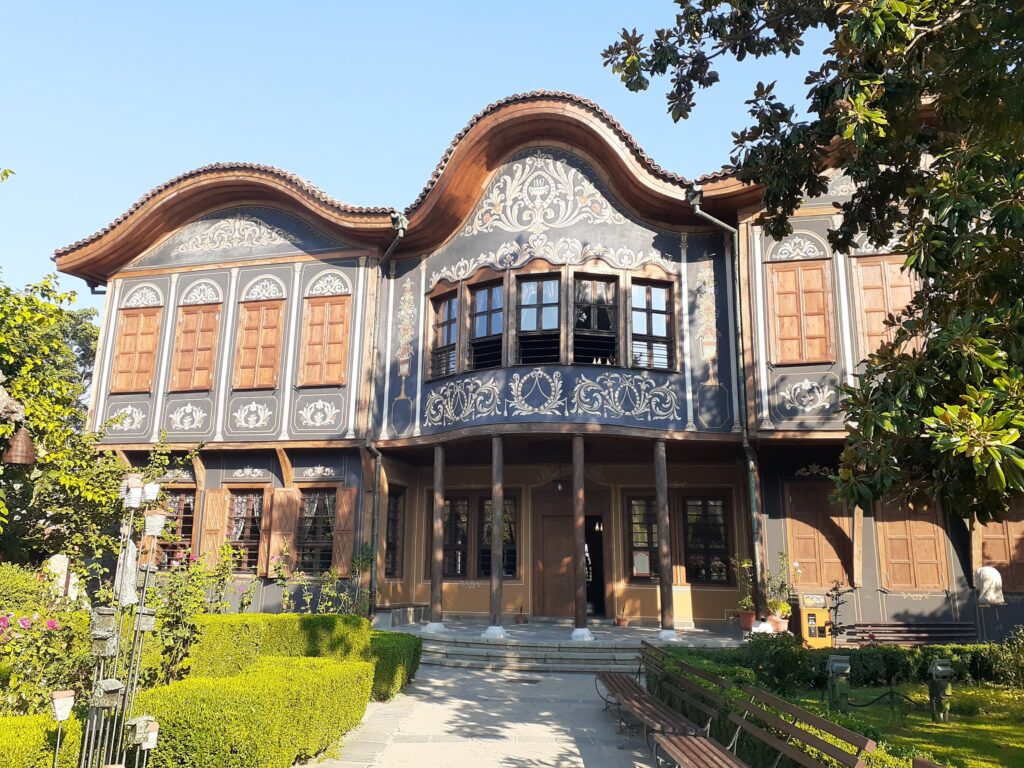
Built in 1847, the museum is housed in the house of the Plovdiv merchant Argyr Kuyumjogur. The museum has six exhibition rooms and houses more than 40,000 items, including artefacts, furniture, musical instruments, works of art and religious objects.The mid-19th century mansion, built in the Plovdiv Baroque style, changed owners and was used for various purposes, but was eventually bought by the city and turned into a museum.
Georgiadi House
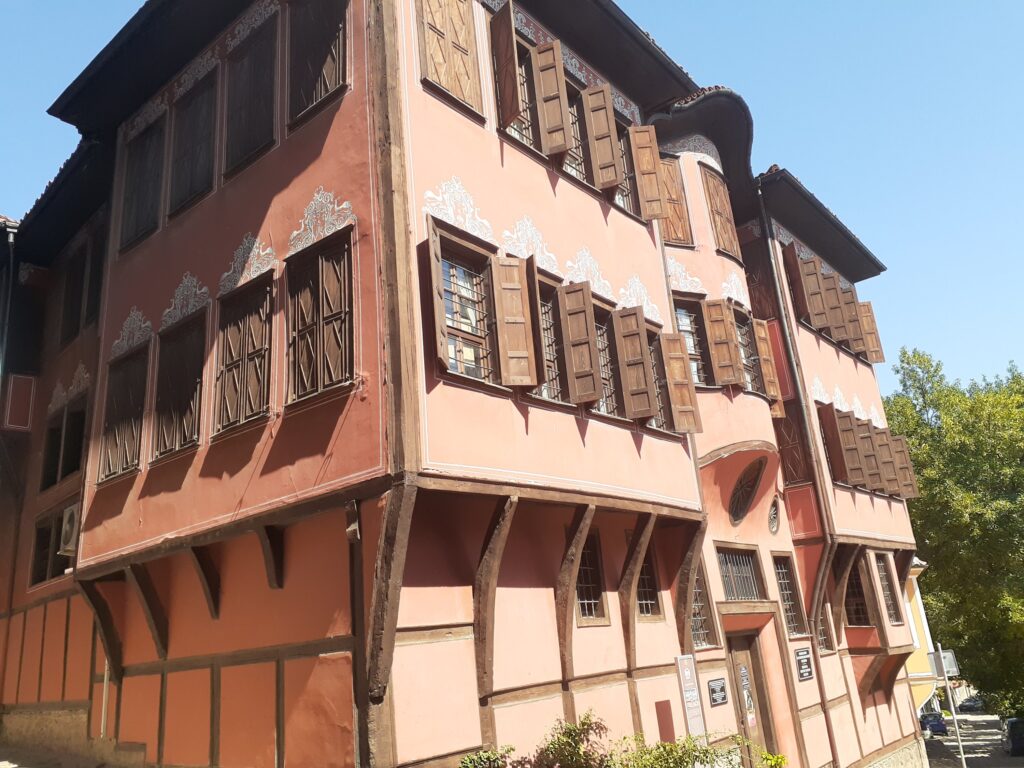
Built in 1848 by Georgi Kendindenoglou, a Bulgarian merchant and master frieze-weaver. The house was restored in 1960.
Early Byzantine fortress walls with a circular tower
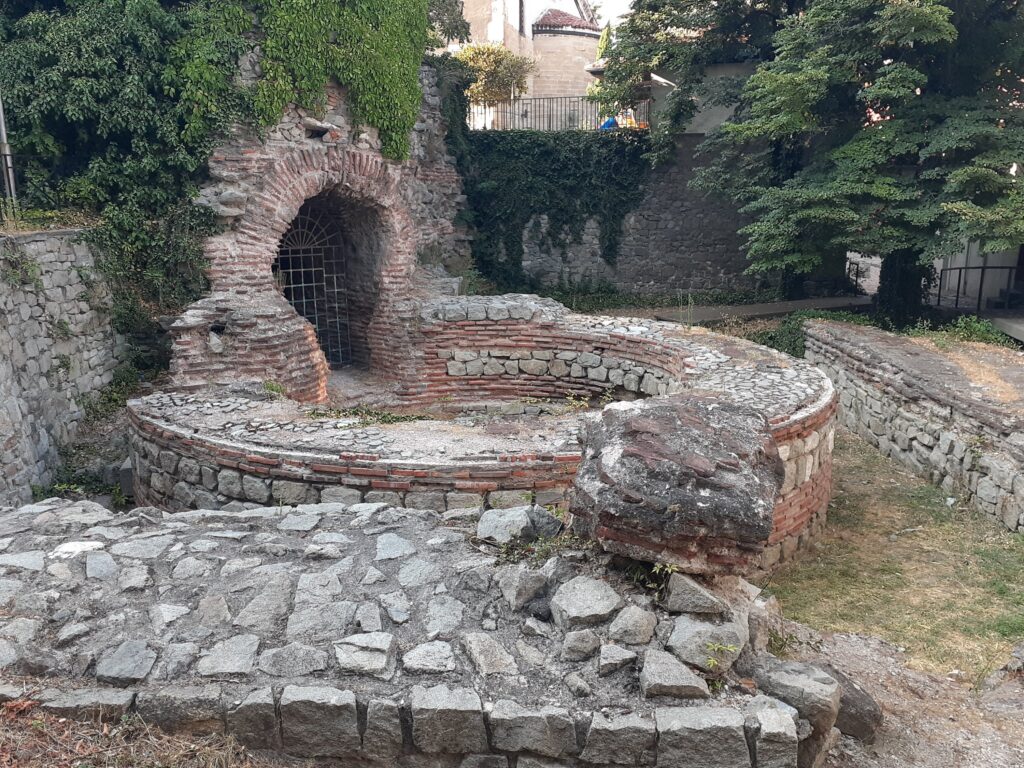
The ruins are tucked away in a discreet location near the edge of the old town. The walls are 3.2 m thick and were built of alternating brick and stone. The round section is where the watchtower was located. It can be seen that they were connected by a brick archway-roofed passageway.
Evangelical Cathedral Church
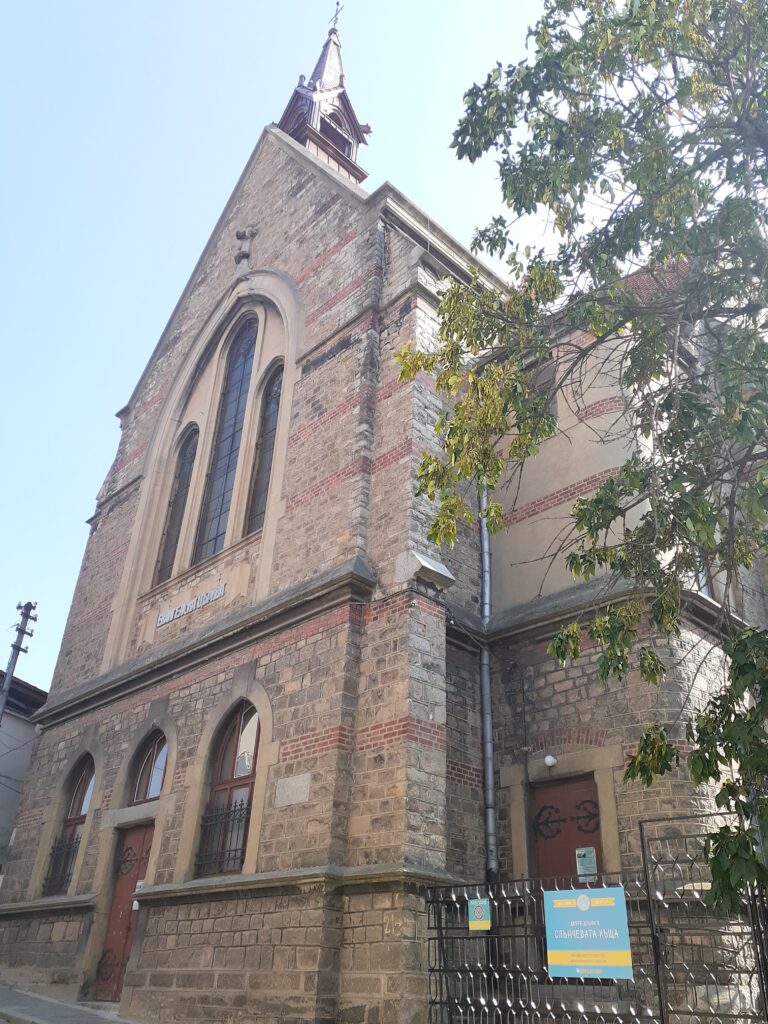
Protestant church on steep Lady Strangford Street. After the Crimean War, American missionaries began to build their first strongholds on Bulgarian soil, but this church was formally organised into an evangelical church in the late 19th century. Masses are still held in English.
Saint Nedelya Orthodox Church
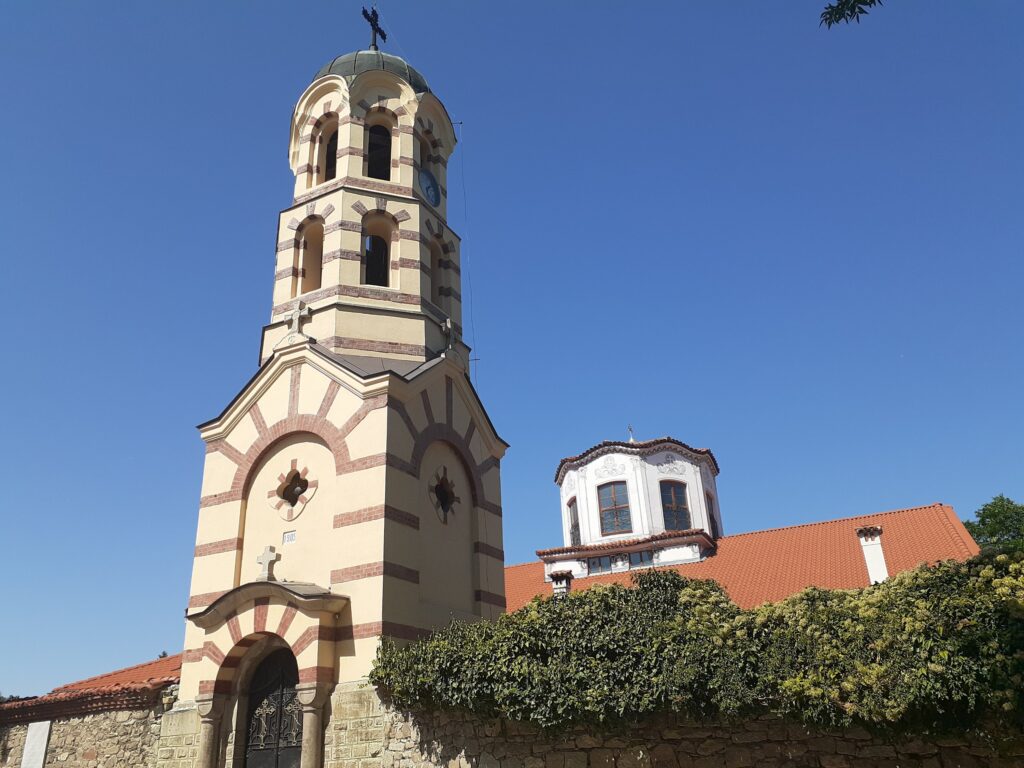
Considered one of the oldest churches in Plovdiv, the present form was rebuilt in 1832. The impressive bell tower was built in 1905.
Clock Tower
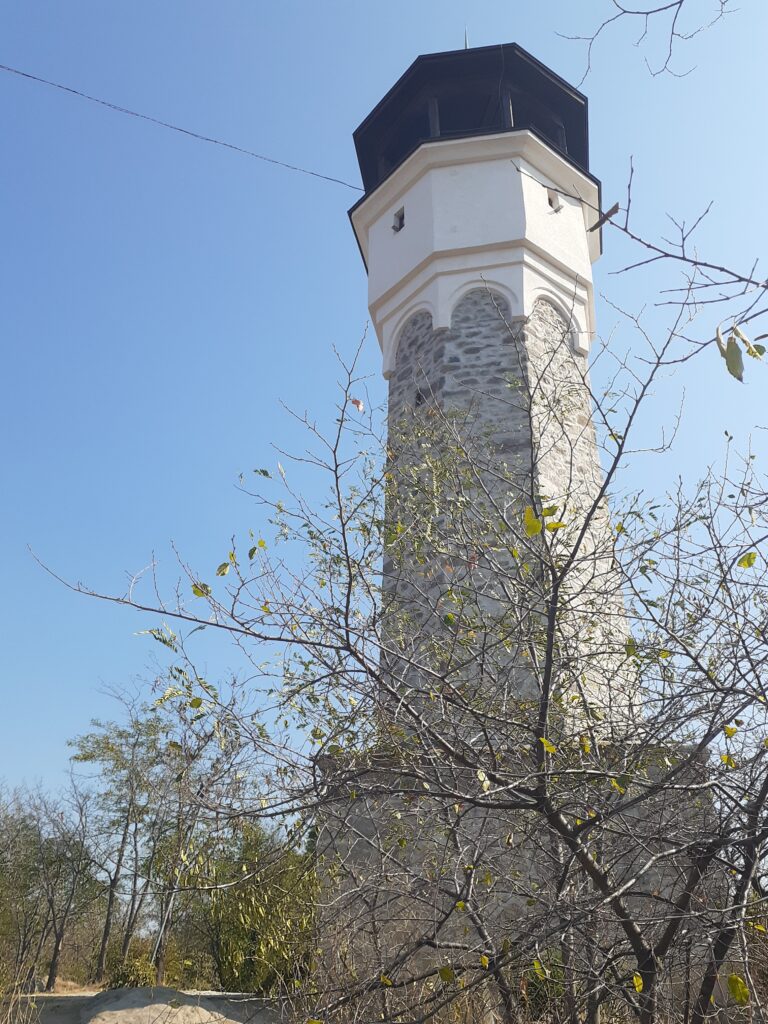
The clock tower is thought to have existed from the end of the 16th century to the beginning of the 17th century. It was built in 1809 in the form we see today, and in 1883 the city council installed a Viennese clock, which was dismantled when it stopped working and collected by the museum.
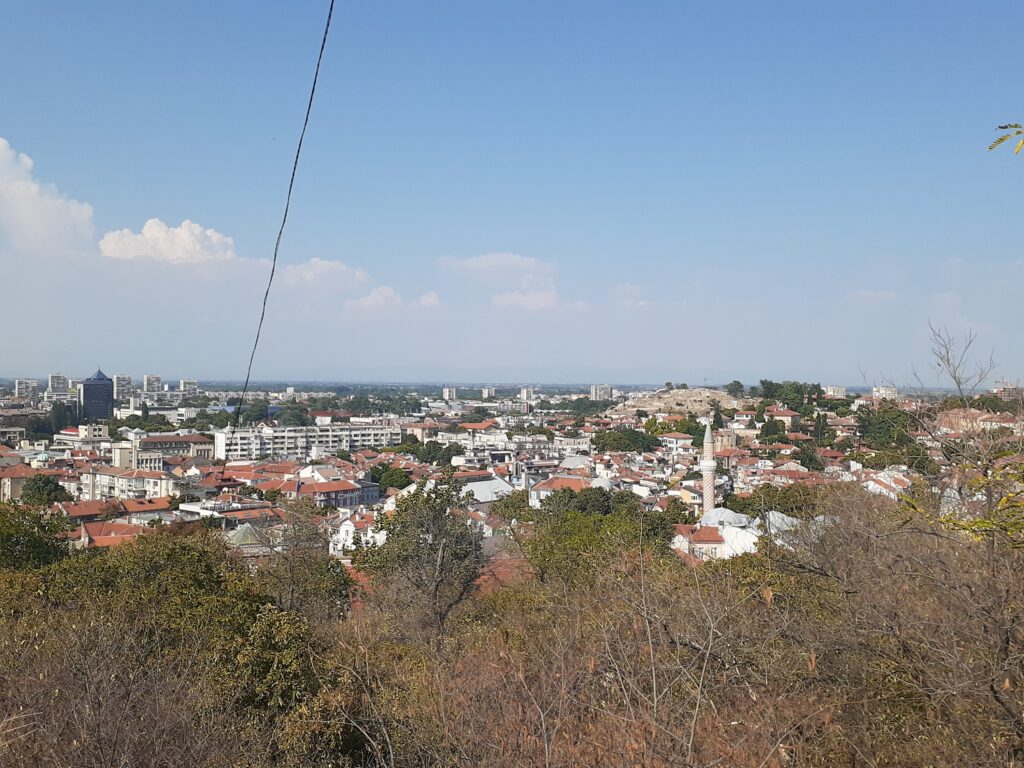
The Clock Tower is situated on a hill overlooking the city, but the view was not that spectacular due to overgrown trees.
Singing Fountains
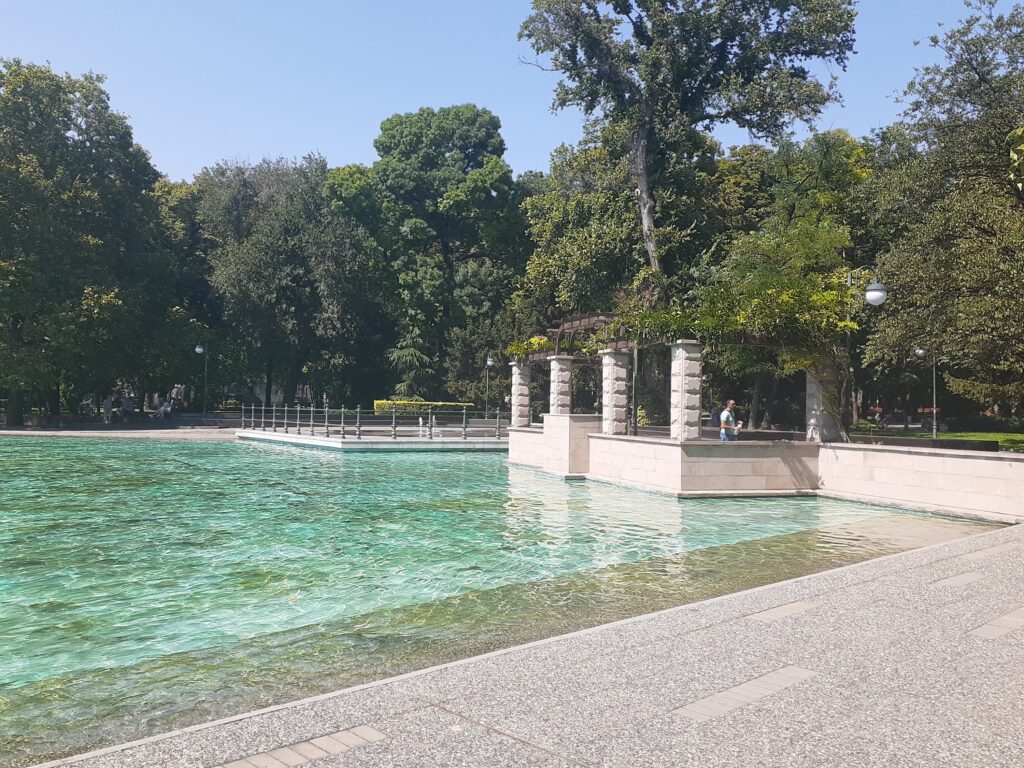
Music and light shows are held three times a week. The main fountain area is large and open. The park around the fountain is also well maintained and is a place of relaxation for the public.
Alyosha Monument

This 11 m high reinforced concrete statue of a Soviet soldier is located on a hill south-west of Plovdiv. It is possible to climb to the top, but this time we only photographed it from below.
It was installed in 1957 to commemorate the Soviet casualties during the Soviet occupation of Bulgaria during the Second World War. Alyosha Skuratov, a soldier from the Third Ukrainian Front, who modelled the statue, passed away in 2013 at the age of 91.
Accommodation in Plovdiv
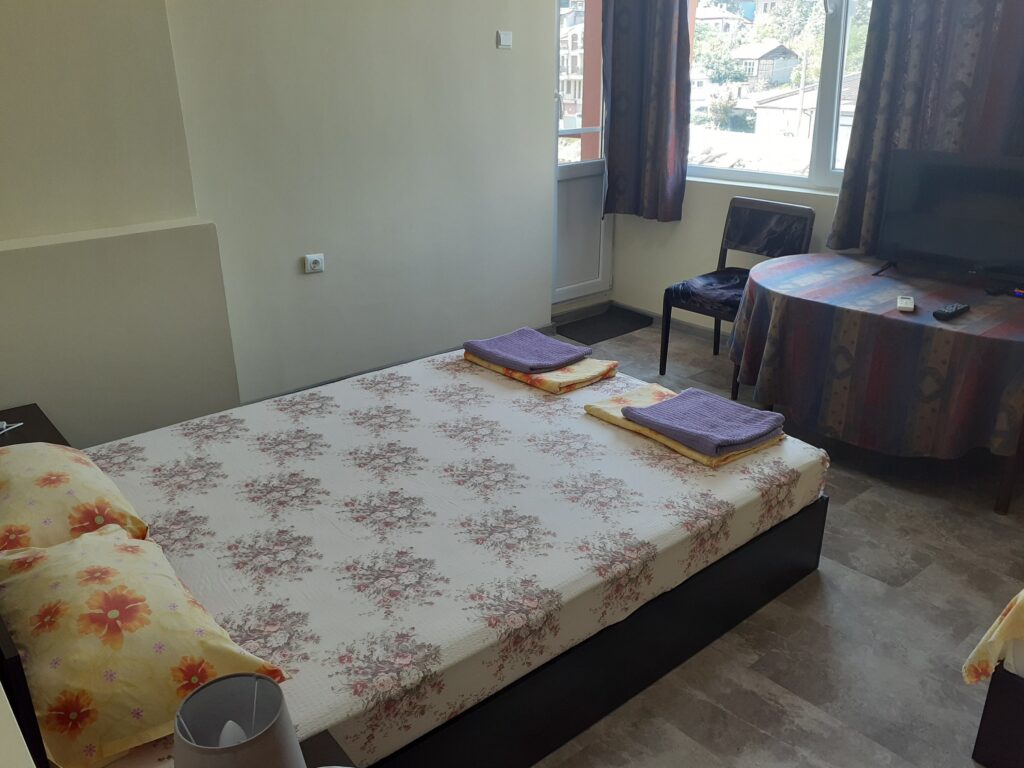
In Plovdiv, we stayed at East Gate – Guest Rooms. It was quiet because it was located a little off the beaten track, not in the busy old town. However, there was some construction work going on at the roundabout in front of the hotel, which looked like excavation work, so who knows what the future holds. There were also windowless rooms (50 lev), but we stayed in a bright triple room (60 lev) with a window. Everything worked well, including air-conditioning and WiFi; there is a mini-shop on the ground floor, which plays a receptionist role.
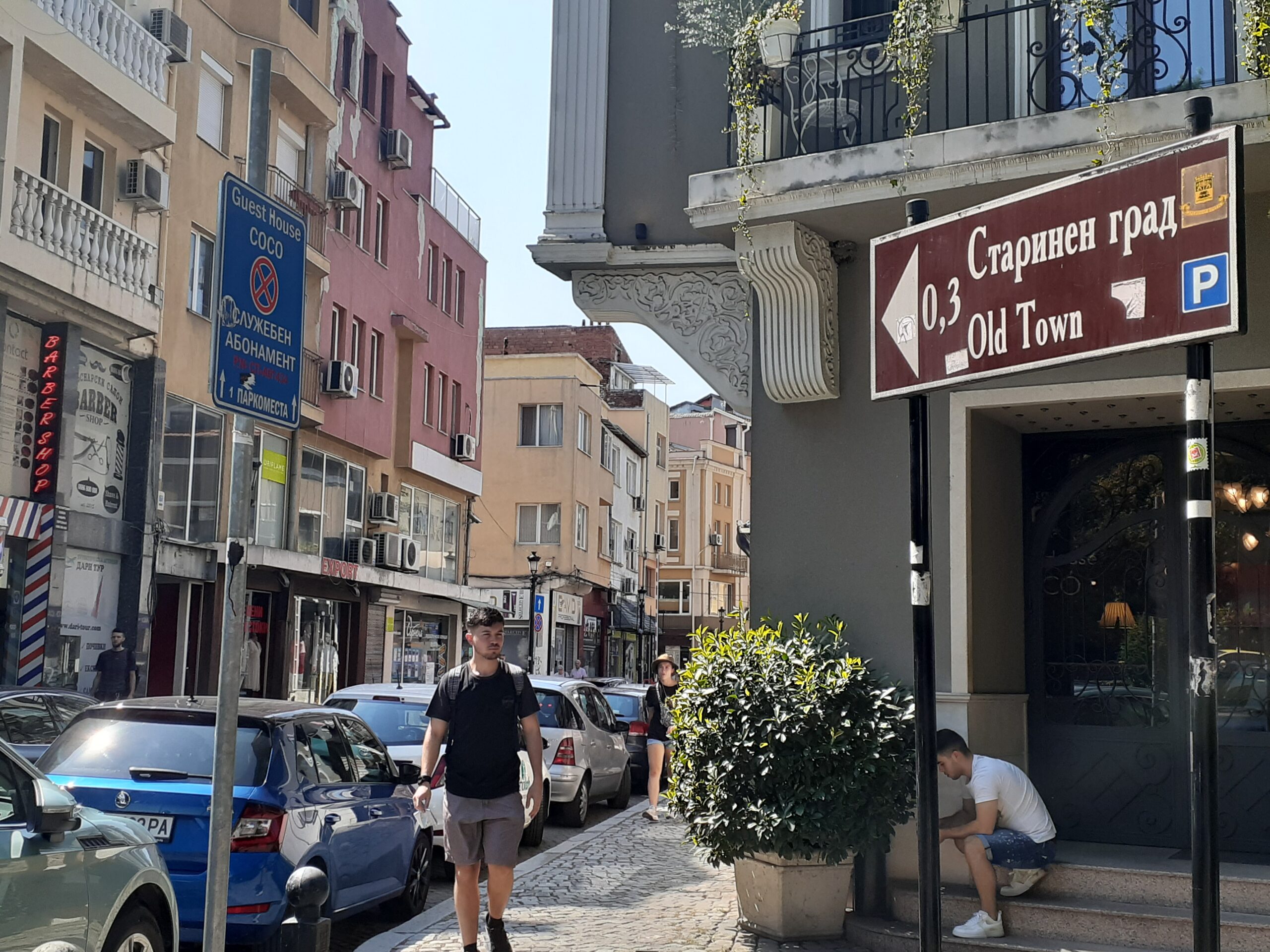


Comment